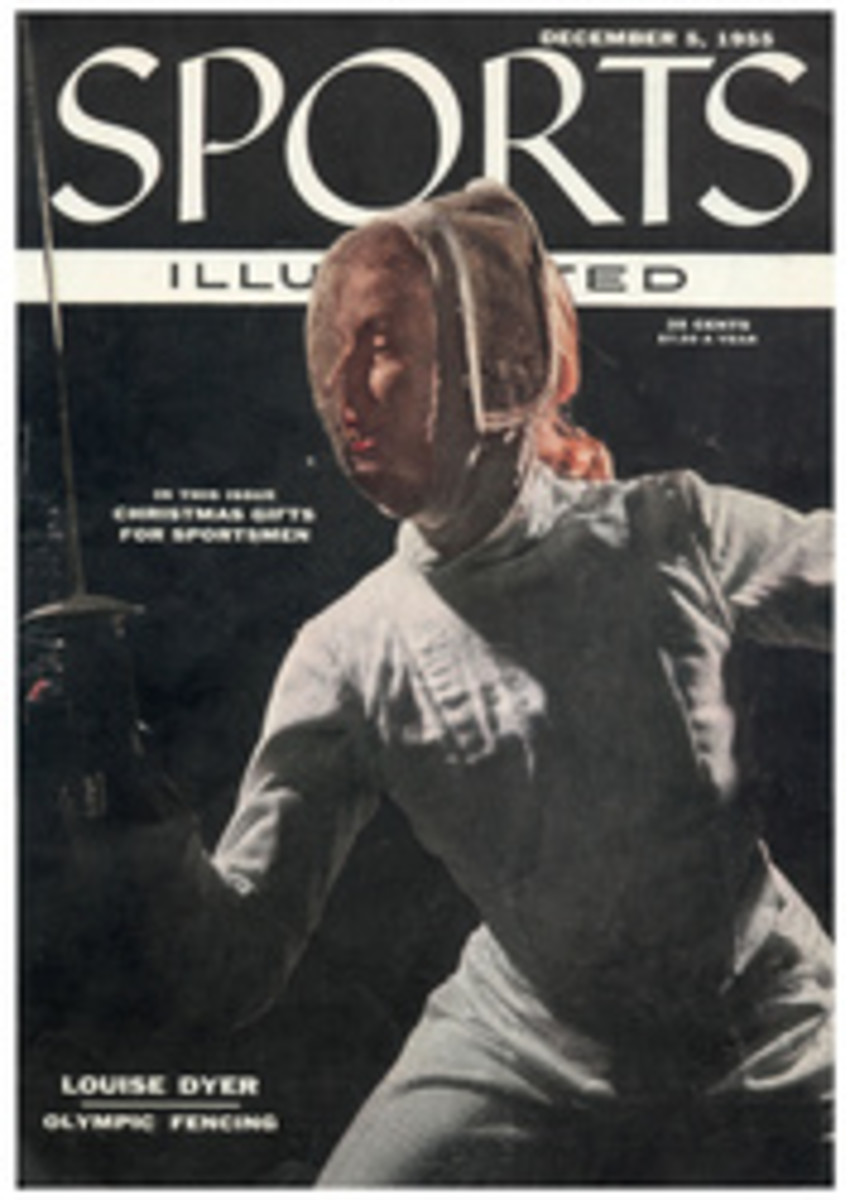
BOXING
The most difficult of popular sports for the spectator to score is boxing, which has no goal lines to cross or hoops to put a ball through or any other well-defined means of signifying that thus and so many points have been made. Still, the way to enjoy a fight thoroughly is to keep your own score.
This is a problem in round-by-round judgment, based on keen observation from a good vantage point. It's hard enough to score a fight accurately from ringside, but a fight viewed on television is seen as through a glass darkly. It is not always possible to determine whether a televised punch has landed solidly in a scoring area or has been slipped or blocked. The swarming fighter who throws punches unceasingly but without good aim may land far less frequently than the sharpshooter who blocks, slips and rides away from such flurries. But on TV the swarmer may look wonderful.
For all that, an attentive television watcher can, except in extremely close fights, come near to matching the scoring of honest, competent officials. Here's how:
At the end of each round mark down who you think won it and by how many points, using the scoring system of the state where the bout is being fought (see below). Give credit for clean hits on the front or sides of the body above the belt (except, of course, the shoulders and arms) and none at all for punches on the back, like those you will see when two boxers are locked in close embrace. Give somewhat less credit for aggressiveness (provided it is effective and not mere dramatics), for defensive work (provided it is not merely passive) and for "ring generalship."
A fighter who backs away constantly but lands sharp jabs and occasional hooks and rights as he retreats is not necessarily unaggressive. If he lands more and better punches than his advancing but missing opponent, give him credit for them and for defensive work and ring generalship as well. On the other hand, the fighter who merely retreats and covers up is not fighting at all. Give his opponent credit for forcing the fight. Generally speaking, the fighter who leads the most and lands the most clean hits wins the round. A knockdown counts heavily—enough to win almost any round.
FOULS AND PENALTIES
A clean hit may be a light jab or a solid, damaging hook. Naturally, the hook counts for much more, though some jabs are real head-snappers. The effectiveness of the blow is what tallies and effectiveness is a matter of where the punch lands and how hard it is delivered. Vital targets are the head, especially jaws and chin, the abdomen just above the belt, and the heart area.
Fouls are usually classified as major and minor. The following list, from the rules of the New York State Athletic Commission, approximates that of most states:
MAJOR FOULS
Hitting an opponent who is down or is rising from down.
Using the knee against the opponent.
Purposely going down without being hit.
Failure to heed the referee's warnings concerning low blows or other minor fouls.
Any dangerous or unsportsmanlike conduct in the ring.
MINOR FOULS
Holding an opponent.
Deliberately maintaining a clinch.
Hitting with the inside or butt of the hand, the wrist or the elbow.
Backhand blows.
Low blows.
Hitting or "flicking" with the open gloves.
Wrestling or roughing at the ropes.
Deliberately striking at that part of the body over the kidneys.
Use of a pivot blow or rabbit punch.
Hitting on the break.
Other fouls (holding and hitting, for instance, and deliberate hitting after the bell) are specified in the rule books of other states and implicit in the rules of all. In the case of major fouls the referee is empowered, at his discretion, to award the bout to the offender's opponent. For minor fouls he may warn the boxer and deduct points or he may take away the round, so advising the judges.
The general effect of fouls on scoring is to deduct points but, unless the referee specifically calls for the forfeit of a round because of them, the judge weighs them with only relative gravity. The printed code on fouls is strict but enforcement is loose. There are, in fact, boxers who if deprived of what amounts to their fouling privileges would scarcely know what to do. Rabbit and kidney punches are common, and so are less obvious tricks like thumbing and butting.
SCORING SYSTEMS
There are four principal scoring systems, none perfect.
In New York the winner of the most rounds wins the fight, except in case of a knockout. Only if there is a tie in rounds does the New York official rely on a point system. If a boxer is just "slightly" superior in a round he gets 1 point, if "clearly" superior 2 points, "overwhelmingly" superior 3 points. If a round is very one-sided and, in addition, a boxer scores one or more knockdowns, he gets 4 points. Thus, the winner of a round gets at least 1 point but the loser gets nothing. If, after adding rounds and points, the official finds the bout tied in both, he may award his decision to whichever boxer finished in better physical condition.
Many states use the "10-point must" system, in which an even round gives each fighter 10 points. A winner with a slight edge gets 10 points for the round, the loser 9. A wider margin gives the winner 10 points, his opponent 8, and so on. Another 10-point system scores an even round at 5-5 and a slight edge at 6-4. Under these systems the points are totted up at the end of the bout, victory going to the man with the most points.
California uses the 11-point Australian system, which makes it necessary that officials be able to add fractions. An even round is scored at 5½ points for each fighter. The winner of a close round gets 6 points to his opponent's 5, 7 points to 4 when there is a broader advantage, and so on.
KEEP MENTAL SCORE
There are pitfalls in scoring. Many boxers conserve strength by coasting through the first part of a round, then close strong in the hope that judges will forget their early indolence. Others stave off weariness by clinching and, with furious movements of the elbows, strive to give the impression that they are engaged in infighting. This is hard to detect on television but must be watched for with particular care.
Three minutes is a long time, as every fighter knows. During a fast round between evenly matched fighters it is sometimes hard to remember at the end which man won most of the exchanges. A good system is to keep mental score during the round, rating Fighter A 6-4 when he wins an exchange, evening it at 5-5 when Fighter B tops him in return, and so until the bell sounds.
Scoring fights adds sophistication and fun to boxing. It is not an exact science but if you keep score and your neighbor does not you are much more entitled to an opinion when the next day's argument starts.
ILLUSTRATION
HOLDING AND HITTING is a common foul, often is confused with true infighting.
ILLUSTRATION
HOLDING OPPONENT'S arm, a minor foul, often seen on side away from referee.
ILLUSTRATION
BUTTING OPPONENT, as man in black trunks is doing, is a foul that causes cuts.

